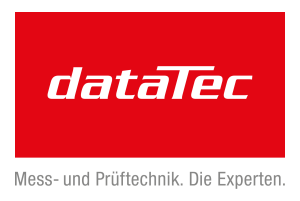Autonomous driving
New algorithm makes sophisticated ethical decisions
Software developed at the Technical University of Munich for autonomous driving is the first algorithm to take into account the 20 ethics recommendations of the EU Commission. This enables it to make significantly more differentiated, weighed-up decisions than previous algorithms.
Before autonomous driving vehicles can be on the roads nationwide, not only the technical implementation must be accomplished. Ethical issues also play an important role in the development of algorithms. For example, the software must be able to deal with unpredictable situations and make the necessary decisions in the event of an impending accident.
Researchers at TUM have now, for the first time, developed an ethical algorithm that does not act according to the maxim "either/or," but rather divides risk fairly. Around 2,000 scenarios with critical situations were tested - distributed across different types of roads and regions such as Europe, the USA and China. The research, which was published in the journal Nature Machine Intelligence, was carried out in collaboration with the chairs of automotive engineering and business ethics at the Institute for Ethics in Artificial Intelligence (IEAI) at TUM.
Maximum acceptable risk defined
The ethical framework that guides the risk assessment of the software was defined in a letter of recommendation by a panel of experts commissioned by the EU Commission in 2020. It includes principles such as the protection of weaker road users and the distribution of risk throughout road traffic.
In order to translate these rules into mathematical calculations, the research team divided vehicles and people moving in traffic based on the risk they pose to others and on their different risk appetites: A truck can cause great damage to other road users, while in many scenarios it itself only suffers minor damage. The reverse is true for a bicycle.
In the next step, the algorithm was instructed not to exceed a maximum acceptable risk in the various traffic situations. In addition, the research team calculated in variables that result from the responsibility of road users, for example, to obey traffic rules.
Standing still is (not) an option
Previous approaches dealt with critical situations on the road with a small number of possible maneuvers. When in doubt, the vehicle simply stopped. The risk assessment now introduced into the code creates more degrees of freedom with less risk for everyone.
An example illustrates the approach: an autonomous vehicle wants to overtake a bicycle, and a truck is coming toward it in the opposite lane. All available data about the environment and the individual participants are now consulted. Can the bike be overtaken without driving into the oncoming lane and at the same time keeping enough distance from the bike? What is the risk for which vehicle and what risk do these vehicles pose for oneself?
When in doubt, the autonomous vehicle with the new software will always wait until the risk is acceptable to everyone. Aggressive maneuvers are avoided, and at the same time the autonomous vehicle does not fall into a state of shock and brake abruptly. »Yes« and »no« do not play a role; a weighing takes place that includes many options.
Traditional ethical thinking patterns led to dead ends
»Until now, traditional ethical thought patterns have often been chosen to justify autonomous vehicle decisions. This ultimately led to a dead end, because in many traffic situations there was nothing to do but violate an ethical principle,« says Franziska Poszler, a researcher at the Chair of Business Ethics at TUM. »We, on the other hand, look at traffic with risk ethics as a central starting point. This allows us to work with probabilities and weigh things in a more differentiated way.«
The researchers emphasize that even algorithms that act according to risk ethics can cover every possible situation and make a decision based on ethical principles, but they still cannot guarantee accident-free road traffic. In the future, further differentiations such as cultural differences would also have to be taken into account in ethical decisions.
The software in the road test
The algorithm developed at TUM has so far been validated in simulations. In the future, the software will also be tested on the road with the EDGAR research vehicle. The code, which incorporates the findings of the research work, is available in open source. In this way, TUM is contributing to the development of practicable and safe autonomous vehicles.







